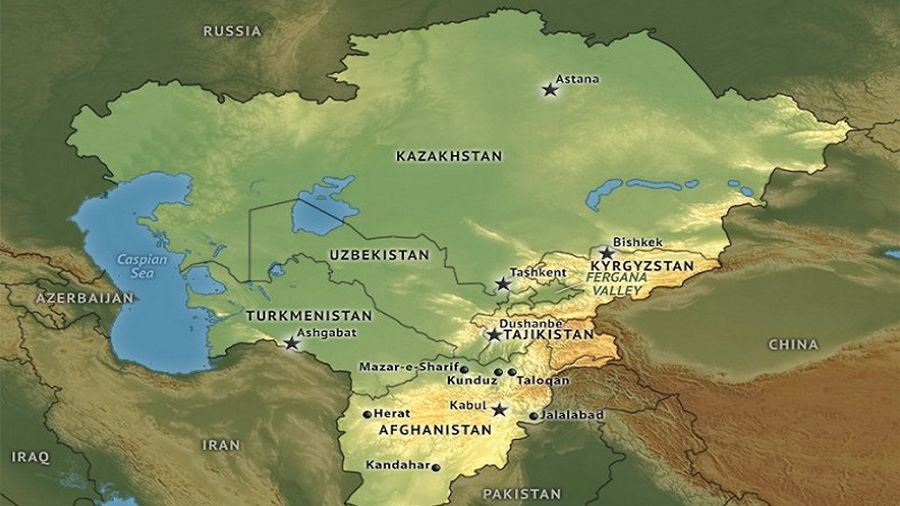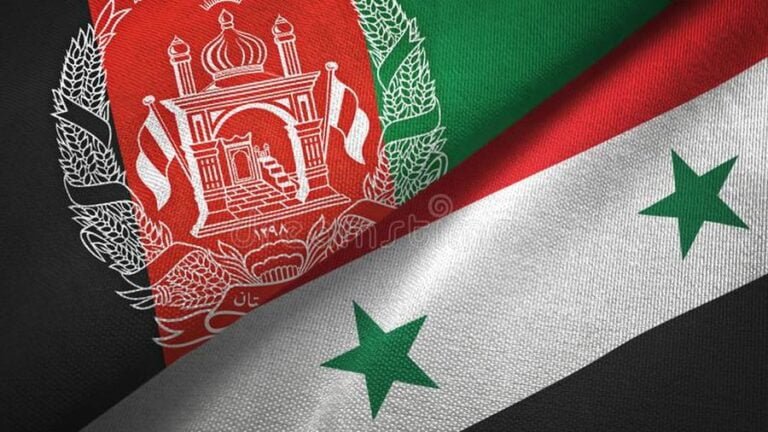It’s Time to Create An Afghan-Central Asian Connectivity Platform
The most important outcome of last month’s virtual Afghan-Central Asian Foreign Ministers meeting was “the need to create a political framework that would strengthen cooperation between these countries in various fields”, which should be prioritized as soon as possible so as to advance their shared goal of facilitating transregional connectivity.
The Afghan Embassy in Turkmenistan’s monthly newsletter for July 2021 contained an important tidbit of information that escaped the attention of most regional observers. This was the outcome of last month’s virtual Afghan-Central Asian Foreign Ministers meeting, which was co-hosted by Afghanistan, Turkmenistan, and the United Nations Regional Centre for Preventive Diplomacy in Central Asia (UNRCCA). The newsletter described this event as “the first format at the level of Foreign Ministers to discuss the peace process, economic development, regional security, and the withdrawal of international forces from Afghanistan.” According to the Afghan Embassy in Turkmenistan, “The Foreign Ministers of Afghanistan and Central Asia stressed the need to create a political framework that would strengthen cooperation between these countries in various fields.”
It’s this reasonable outcome that should be prioritized as soon as possible so as to advance those countries’ shared geo-economic goal of facilitating transregional connectivity. Mid-July’s conference in Tashkent on Central Asia-South Asia connectivity saw all participants – which included representatives from China, Russia, and the US – agreeing on the importance of this vision. Immediately thereafter, the US announced the formation of a “New Quad” between itself, Pakistan, Afghanistan, and Uzbekistan focused specifically on integration. All regional stakeholders including those four countries are most directly interested in February’s agreement to built a Pakistan-Afghanistan-Uzbekistan (PAKAFUZ) railway, which is regarded as the most realistic means to this connectivity end.
PAKAFUZ isn’t the only relevant transregional corridor proposal even though it’s arguably the most promising. The China-Central Asia-West Asia Economic Corridor (CCAWEC) is another one, though this plan’s exact route is vaguely defined at the present moment, as is the eastern branch of the North-South Transport Corridor (NSTC) from the Indian-controlled Iranian port of Chabahar that aims to connect to those countries too. Some observers also expect that China’s recent modernization of eastern Tajikistan’s highway network is premised on the plan of eventually pioneering what can tentatively be called a “Persian Corridor” for connecting those two and Afghanistan with Beijing’s new 25-year strategic partners in Iran. Finally, there’s the Lapis Lazuli Corridor (LLC) between Afghanistan and Turkey via Turkmenistan, the Caspian Sea, Azerbaijan, and Georgia.
Seeing as how these five potential corridors all transit through Afghanistan and Central Asia, it’s sensible for them to want “to create a political framework that would strengthen cooperation between these countries in various fields”, particularly with respect to their shared geo-economic goal of facilitating transregional connectivity. Whatever this structure ends up being called, it should only include those six countries as formal members while allowing other stakeholders like China, India, Iran, Pakistan, Russia, Turkey, and the US to participate as observers. This would enable Afghanistan and the Central Asian Republics (CAR) to avoid being overshadowed by those much larger countries and thus inadvertently risk becoming objects of International Relations instead of remaining independent subjects like they presently are.
Each of those much larger countries already have some level of institutionalized connectivity cooperation with Afghanistan and the CARs which justifies their participation as observers in the proposed platform. The Economic Cooperation Organization (ECO) brings together those six countries, Azerbaijan, Iran, Pakistan, and Turkey, while China’s Belt & Road Initiative (BRI) does the same with those six and the People’s Republic. The US’ C5+1 framework is the basis for its relations with Central Asia, while its “New Quad” includes the PAKAFUZ countries. Finally, the Ashgabat Agreement consists of India, Iran, Kazakhstan, Oman, Pakistan, Turkmenistan, and Uzbekistan while Russia’s Eurasian Economic Union (EAEU) includes Kazakhstan and Kyrgyzstan.
With these observations in mind, there shouldn’t be anything controversial about Afghanistan and the CARs coming together to create their own integration platform for facilitating transregional connectivity so long as they invite China, India, Iran, Pakistan, Russia, Turkey, and the US to participate as observers. Each of those seven much larger countries should understand their six partners’ concerns about being overshadowed by their formal membership in this group. All of them should therefore support their implementation of last month’s proposal since the resultant structure could also become the platform through which each of them more effectively interface with those countries. Hopefully some tangible progress can be achieved in this respect very soon since such an outcome would advance everyone’s geo-economic interests.






